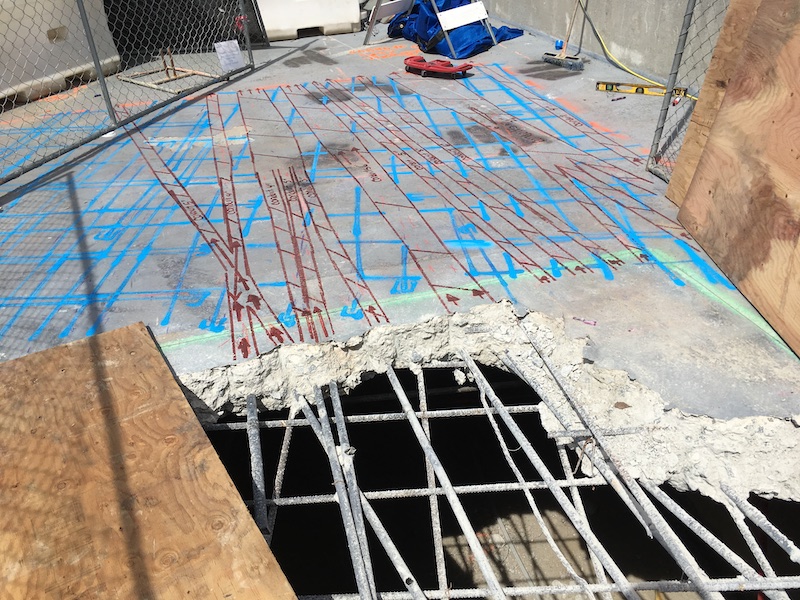Unveil the Transformative Power of Concrete Scanning in Taking Full Advantage Of Effectiveness and Safety
Concrete scanning has become a critical tool in the building industry, supplying exceptional advantages in boosting project effectiveness and ensuring safety and security requirements. By making use of sophisticated modern technology, concrete scanning allows specialists to see beyond the surface, uncovering surprise complexities that could impact the structural integrity of a building. The transformative power of concrete scanning depends on its ability to supply real-time information and comprehensive understandings, transforming how projects are prepared and carried out. As we dive into the details of this ingenious method, a globe of opportunities opens, showcasing a brand-new era of building and construction techniques that prioritize accuracy and protection.
Importance of Concrete Scanning
Making sure the structural stability and safety and security of building and construction projects starts with the crucial step of conducting complete concrete scanning. Concrete scanning is a non-destructive approach used to find and map subsurface elements within concrete frameworks.
The significance of concrete scanning can not be overstated, as it plays a crucial function in avoiding mishaps, lessening job delays, and guaranteeing the long-lasting sturdiness of the building. By determining possible threats prior to the construction stage starts, home builders can carry out proper precaution and make informed choices relating to the design and execution of the task. Furthermore, concrete scanning helps in optimizing project timelines and spending plan by preventing unforeseen costs and hold-ups that may occur as a result of unforeseen obstructions within the concrete. Ultimately, spending in thorough concrete scanning is an aggressive strategy that improves both performance and safety in building and construction projects.
Just How Concrete Scanning Functions
Concrete scanning runs as a critical tool in building tasks by utilizing advanced modern technologies to spot and map subsurface components without creating architectural damage. Ground Permeating Radar (GPR) and Electromagnetic Induction (EMI) are 2 primary techniques used in concrete scanning. GPR jobs by emitting high-frequency radar pulses right into the surface area, which recuperate when they run into subsurface items or voids. The time considered the signal to return suggests the deepness and place of the items. EMI, on the various other hand, makes use of electro-magnetic areas to identify variances in material compositions, such as identifying rebar or conduits within concrete structures.
During the scanning procedure, the data gathered is analyzed in real-time, allowing instant identification of possible hazards or barriers below the surface. By utilizing these advanced innovations, concrete scanning considerably decreases the threat of pricey damages and injuries on building and construction sites.
Benefits of Concrete Scanning
One of the key advantages of concrete scanning is the ability to find and situate ingrained things such as rebar, post-tension cable televisions, and avenues precisely. Concrete scanning helps in preparation and designing much more effectively, as it provides accurate details regarding the area and depth of structural parts.

Case Research Studies: Concrete Scanning Success

In an additional situation, a building company made use of 3D concrete scanning to evaluate the condition of maturing concrete structures in a historic building. The detailed scans offered important insights into the level of deterioration and assisted prioritize maintenance efforts effectively. By proactively addressing locations of worry determined via scanning, the firm had the ability to expand the lifespan of the structure and guarantee passenger safety and security.
These study underscore the transformative power of concrete scanning in enhancing effectiveness, precision, and safety and security in building and construction projects.
Carrying Out Concrete Scanning in Projects
Implementing innovative scanning innovations during building jobs has actually come to be significantly vital for improving accuracy and safety. By integrating concrete scanning right into project preparation and execution, construction groups can recognize possible risks, such as rebar or post-tension wires, concealed within concrete frameworks. This proactive approach reduces the danger of accidents, delays, and pricey rework, inevitably bring about much more reliable project timelines and spending plans.
To execute concrete scanning properly, project managers ought to collaborate carefully with knowledgeable scanning experts to determine the most ideal scanning techniques for the details project demands. Engaging scanning experts from the beginning of a job makes it possible for the group to develop thorough scanning strategies that address essential areas of concern and guarantee detailed data collection.
Moreover, incorporating concrete scanning into normal job process can enhance decision-making processes, as real-time scan information gives instant insights into the problem of concrete structures - Concrete Scanning. This data-driven technique helps with educated analytical and makes it possible for teams to make changes quickly, fostering a culture of efficiency and safety throughout the job lifecycle

Final Thought
Finally, concrete scanning plays a vital duty in enhancing effectiveness and safety and security in building and construction jobs. By find out this here using innovative technology to map and discover out underlying structures within concrete, this procedure helps click here for info to stop expensive blunders, make sure structural honesty, and minimize dangers on website. With the capability to reveal covert aspects and supply exact information, concrete scanning shows to be an important tool for optimizing project results and making best use of overall success.
Concrete scanning is a non-destructive technique made use of to spot and map subsurface elements within concrete structures. Additionally, concrete scanning helps in optimizing job timelines and spending plan by preventing unanticipated costs and hold-ups that might develop due to unpredicted obstructions within the concrete. One significant situation research entails a massive improvement project where concrete scanning played a crucial duty in making certain project success.In another situation, a construction firm made use of 3D concrete scanning to examine the condition of maturing concrete structures in a historic structure. By incorporating concrete scanning into task preparation and execution, construction groups can determine potential risks, such as rebar or post-tension cables, concealed within concrete frameworks.